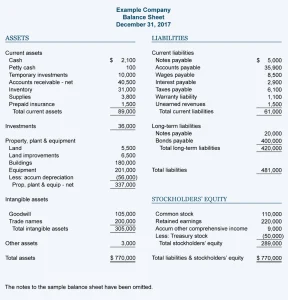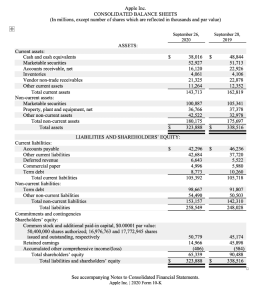Key Financial Statements: Income Statement, Balance Sheet, and Cash Flow Statement
Financial statements are essential tools that provide a comprehensive overview of a company’s financial performance and position. The three primary financial statements are the Income Statement, Balance Sheet, and Cash Flow Statement. Each statement serves a unique purpose and offers valuable insights to stakeholders, including investors, management, and creditors. This lesson will explore each of these financial statements in detail, highlighting their components, importance, and how they interrelate.
1. Income Statement
Definition
The income statement, also known as the profit and loss statement (P&L), summarizes a company’s revenues, expenses, and profits over a specific period, typically a quarter or a year. It provides insight into the company’s operational efficiency and profitability.
Key Components
- Revenues: The total income generated from the sale of goods or services before any expenses are deducted. For example, a Nigerian telecommunications company like MTN Nigeria would report its total service revenue from mobile subscriptions.
- Cost of Goods Sold (COGS): The direct costs attributable to the production of the goods sold by the company. This includes materials and labor costs. For instance, a Nigerian manufacturing company would include costs related to raw materials and labor in its COGS.
- Gross Profit: Calculated as Revenues minus COGS. This figure indicates how efficiently a company produces its goods.
- Operating Expenses: These are the costs incurred in the normal course of business operations, excluding COGS. They typically include selling, general, and administrative expenses (SG&A), such as salaries, rent, and utilities.
- Operating Income: This is derived from Gross Profit minus Operating Expenses. It reflects the profit generated from core business operations.
- Net Income: Often referred to as the “bottom line,” net income is the total profit after all expenses, including taxes and interest, have been deducted from revenues. This figure is crucial for assessing the company’s overall profitability.
Importance
The income statement is vital for evaluating a company’s financial performance over time. It helps stakeholders understand how well the company generates profit from its operations, assess trends in revenue and expenses, and make informed decisions regarding investments or lending.
2. Balance Sheet
Definition
The balance sheet provides a snapshot of a company’s financial position at a specific point in time. It summarizes the company’s assets, liabilities, and shareholders’ equity, adhering to the fundamental accounting equation:Assets = Liabilities + Equity
Key Components
- Assets: Resources owned by the company that have economic value. Assets are classified into:
- Current Assets: Assets expected to be converted into cash or used within one year, such as cash, accounts receivable, and inventory.
- Non-Current Assets: Long-term investments that are not expected to be liquidated within a year, including property, plant, and equipment (PPE) and intangible assets.
- Liabilities: Obligations that the company owes to external parties. Liabilities are categorized into:
- Current Liabilities: Obligations due within one year, such as accounts payable and short-term loans.
- Long-Term Liabilities: Obligations due beyond one year, such as long-term loans and bonds payable.
- Equity: Represents the owners’ claims on the company’s assets after all liabilities have been deducted. It includes contributed capital and retained earnings.
Importance
The balance sheet is crucial for assessing a company’s financial health and stability. It provides insights into the company’s liquidity, solvency, and capital structure. Investors and creditors use the balance sheet to evaluate the company’s ability to meet its short-term and long-term obligations.
3. Cash Flow Statement
Definition
The cash flow statement tracks the flow of cash in and out of a business over a specific period. It categorizes cash flows into three main activities: operating, investing, and financing.
Key Components
- Operating Activities: Cash flows from the company’s core business operations, including cash received from customers and cash paid to suppliers and employees. This section reflects the company’s ability to generate cash from its regular business activities.
- Investing Activities: Cash flows related to the acquisition and disposal of long-term assets, such as property, equipment, and investments. For example, if a Nigerian company purchases new machinery, it would be recorded as a cash outflow in this section.
- Financing Activities: Cash flows related to borrowing and repaying debt, issuing shares, and paying dividends. This section shows how the company finances its operations and growth.
Importance
The cash flow statement is essential for understanding a company’s liquidity and cash management. It helps stakeholders assess the company’s ability to generate cash and fund its operations, investments, and financing activities. Unlike the income statement, which may include non-cash items, the cash flow statement provides a clear picture of actual cash movements.
Interrelationship of Financial Statements
The three financial statements are interconnected and provide a comprehensive view of a company’s financial performance and position:
- Net Income from the Income Statement: This figure flows into the equity section of the balance sheet as retained earnings. It also serves as the starting point for the cash flow statement.
- Cash Flow Statement Adjustments: The cash flow statement adjusts net income for non-cash items (like depreciation) and changes in working capital accounts (like accounts receivable and accounts payable) from the balance sheet.
- Balance Sheet Snapshot: The balance sheet reflects the cumulative effects of all transactions reported in the income statement and cash flow statement. It provides a snapshot of the company’s financial position at the end of the reporting period.
Conclusion
The income statement, balance sheet, and cash flow statement are essential financial statements that provide valuable insights into a company’s financial health and performance. Understanding these statements is crucial for stakeholders, including investors, management, and creditors, to make informed decisions. By analyzing these financial statements together, stakeholders can gain a comprehensive understanding of a company’s operational efficiency, financial stability, and cash management, ultimately guiding their investment and strategic decisions.


